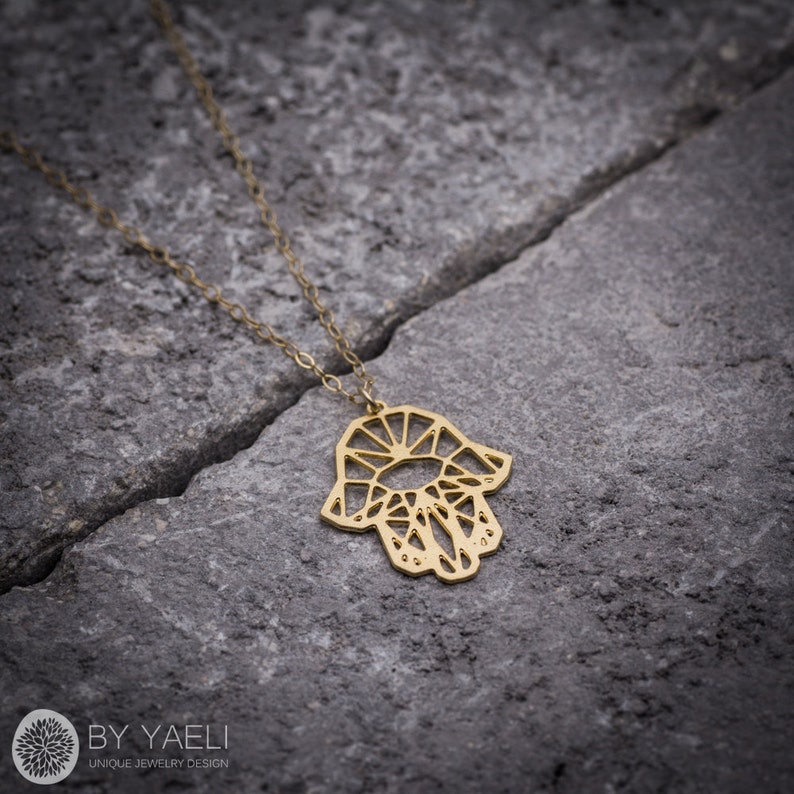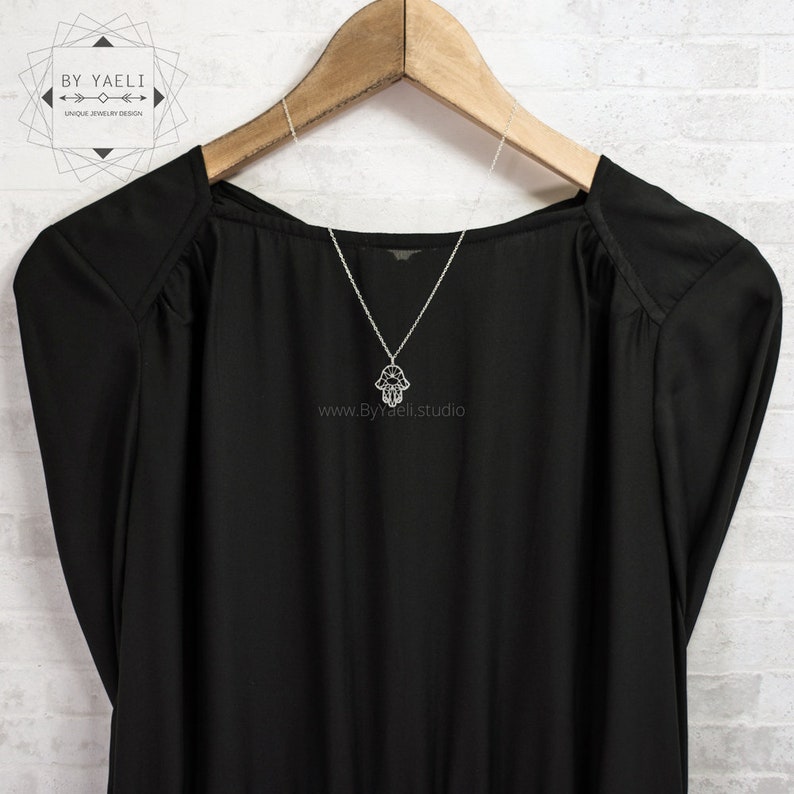Throughout history and throughout the world, there have been a series of charms, ornaments and pieces of jewelry to fight evil spirits and bad luck. One of the best-known charms is the dreamcatcher. The dreamcatcher comes from the Ojiwe people and has come to represent the Native American culture. The dream catcher is always designed with a variety of fibers designed to resemble spider silk, which is believed to protect sleeping children by filtering nightmares or catching them in the net.
In Japan, there are many variations of protective charm that have existed for generations, such as Omamori, which are traditionally amulets obtained from shrines that have been blessed by the goodwill of the gods. In Western culture, charms such as a false rabbit's foot and four-leaf clover are very popular items intended to bring good luck in all aspects of life.

The symbols mean
It is in this way that the Hamsa necklace is similar. The word Hamsa literally translates as "five" in Arabic, which is a reference to the five fingers made by the amulet. Hamsa is very popular in the Middle East and has recently become part of Jewish culture. This charm is known by several different names, but in a Jewish context it is also known as Miriam's Hand.
In all cultures, Hamsa is a sign of protection, the open hand is a welcoming symbol of calm and goodwill towards others. It has five fingers; three lay straight and together, while the little finger and the thumb curved outward. The symbol offers a stylized approximation of the human hand, since the pink and the thumb have the same size and shape. This amulet is best used as other types of charm. You can place it virtually anywhere to ward off evil spirits and dark auras.
Your other use
Large rugs are available that illustrate each finger with ornate details and colors. These decorations are perfect for hanging on the walls, especially those that are exposed to sunlight during the day. Like other common amulets, Miriam's hand can even be bought as a small amulet that you can easily cut into a key ring, purse or cell phone.

Necklaces, bracelets and other types of jewelry are also the best places for this amulet. Having it so close to your body also results in a greater degree of luck and protection for the user. Many artists create highly ornate jewels with this popular hand, and the representation of an eye is often seen in the center of the palm.
This eye represents what is known as the "evil eye", which is a reference to the dark look that some people will give in the presence of envy. It is believed that Hamsa is the most vigilant protector against the evil eye. Fish are also common symbols because they are believed to be resistant to the effects of the evil eye.
Whether you believe in superstitions, deities or any type of evil energy, it is clear that the lucky charm is a common place in all societies and cultures. For generations, people have relied on simple blessings to overcome the most horrible sin and struggle.
No comments:
Post a Comment